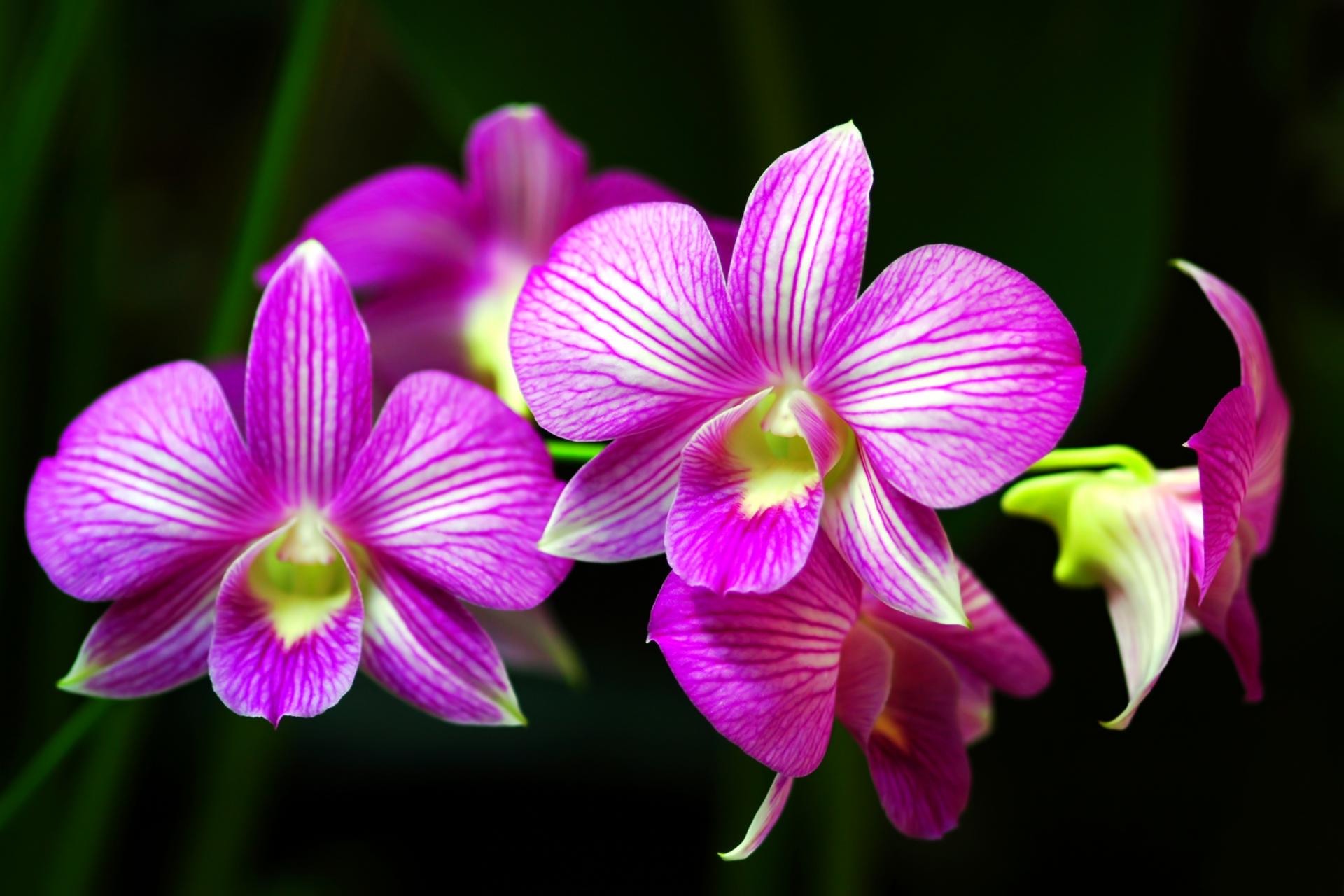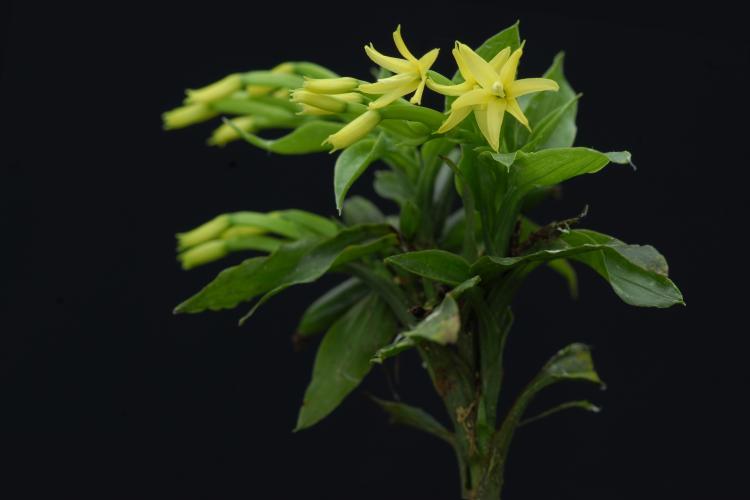Orchid Evolution
Constituting approximately 10% of flowering plant species, orchids (Orchidaceae) display unique flower morphologies, possess an extraordinary diversity in lifestyle, and have successfully colonized almost every habitat on Earth.
THE GENOME SEQUENCE OF THE ORCHID PHALAENOPSIS EQUESTRIS
In this study we presented the genome sequence of the tropical epiphytic orchid Phalaenopsis equestris, a frequently used parent species for orchid breeding. P. equestris was the first plant with Crassulacean Acid Metabolism (CAM) for which the genome was sequenced. Our assembled genome contains 29,431 predicted protein-coding genes. We found that contigs likely to be underassembled, owing to heterozygosity, are enriched for genes that might be involved in self-incompatibility pathways.
We found evidence for an orchid-specific paleopolyploidy event that preceded the radiation of most orchid clades, and our results suggest that gene duplication might have contributed to the evolution of CAM photosynthesis in P. equestris. Finally, we found expanded and diversified families of MADS-box C/D-class, B-class AP3 and AGL6-class genes, which might contribute to the highly specialized morphology of orchid flowers.
THE DENDROBIUM CATENATUM LINDL. GENOME SEQUENCE PROVIDES INSIGHTS INTO POLYSACCHARIDE SYNTHASE, FLORAL DEVELOPMENT AND ADAPTIVE EVOLUTION
In this study we reported the first draft genome sequence of a lithophytic orchid, Dendrobium catenatum. We predicted 28,910 protein-coding genes, and found evidence of a whole genome duplication shared with Phalaenopsis. We observed the expansion of many resistance-related genes, suggesting a powerful immune system responsible for adaptation to a wide range of ecological niches. We also discovered extensive duplication of genes involved in glucomannan synthase activities, likely related to the synthesis of medicinal polysaccharides. Expansion of MADS-box gene clades ANR1, StMADS11, and MIKC*, involved in the regulation of development and growth, suggests that these expansions are associated with the astonishing diversity of plant architecture in the genus Dendrobium. On the contrary, members of the type I MADS box gene family were missing, which might explain the loss of the endospermous seed.
THE APOSTASIA GENOME AND THE EVOLUTION OF ORCHIDS
In this study we presented the draft genome sequence of Apostasia shenzhenica, a representative of one of two genera that form a sister lineage to the rest of the Orchidaceae, providing a reference for inferring the genome content and structure of the most recent common ancestor of all extant orchids and improving our understanding of their origins and evolution. In addition, we presented transcriptome data for representatives of Vanilloideae, Cypripedioideae and Orchidoideae, and third-generation genome data for two species of Epidendroideae, covering all five orchid subfamilies.
A. shenzhenica shows clear evidence of a whole-genome duplication, which is shared by all orchids and occurred shortly before their divergence.
Comparisons between A. shenzhenica and other orchids and angiosperms also permitted the reconstruction of an ancestral orchid gene toolkit. We identified new gene families, gene family expansions and contractions, and changes within MADS-box gene classes, which control a diverse suite of developmental processes, during orchid evolution. This study sheds new light on the genetic mechanisms underpinning key orchid innovations, including the development of the labellum and gynostemium, pollinia, and seeds without endosperm, as well as the evolution of epiphytism; reveals relationships between the Orchidaceae subfamilies; and helps clarify the evolutionary history of orchids within the angiosperms.
THE CYMBIDIUM GENOME REVEALS THE EVOLUTION OF UNIQUE MORPHOLOGICAL TRAITS
The genus Cymbidium in Orchidaceae is well known for its unique vegetation, floral morphology, and flower scent traits. In this study we presented a chromosome-scale assembly of the genome of Cymbidium ensifolium (Jianlan). Comparative genomic analysis showed that C. ensifolium has experienced two whole-genome duplication (WGD) events, the most recent of which was shared by all orchids, while the older event was the τ event shared by most monocots.
The results of MADS-box genes analysis provided support for establishing a unique gene model of orchid flower development regulation, and flower shape mutations in C. ensifolium were shown to be associated with the abnormal expression of MADS-box genes. The most abundant floral scent components identified included methyl jasmonate, acacia alcohol and linalool, and the genes involved in the floral scent component network of C. ensifolium were determined. Furthermore, the decreased expression of photosynthesis-antennae and photosynthesis metabolic pathway genes in leaves was shown to result in colorful striped leaves, while the increased expression of MADS-box genes in leaves led to perianth-like leaves. Our results provide fundamental insights into orchid evolution and diversification.
GENOMES OF LEAFY AND LEAFLESS PLATANTHERA ORCHIDS ILLUMINATE THE EVOLUTION OF MYCOHETEROTROPHY
To improve our understanding of the origin and evolution of mycoheterotrophic plants, we generated chromosome-scale genome assemblies of two sibling orchid species: partially mycoheterotrophic Platanthera zijinensis and holomycoheterotrophic Platanthera guangdongensis. Comparative analysis showed that mycoheterotrophy is associated with increased substitution rates and gene loss, and the deletion of most photoreceptor genes and auxin transporter genes might be linked to the unique phenotypes of fully mycoheterotrophic orchids. Conversely, trehalase genes that catalyse the conversion of trehalose into glucose have expanded in most sequenced orchids, in line with the fact that the germination of orchid non-endosperm seeds needs carbohydrates from fungi during the protocorm stage. We further showed that the mature plant of P. guangdongensis, different from photosynthetic orchids, keeps expressing trehalase genes to hijack trehalose from fungi. Therefore, we propose that mycoheterotrophy in mature orchids is a continuation of the protocorm stage by sustaining the expression of trehalase genes. Our results shed light on the molecular mechanism underlying initial, partial and full mycoheterotrophy.

